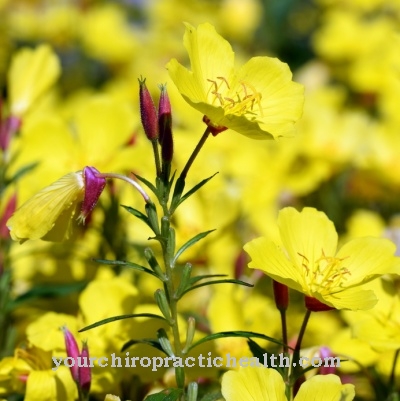Of the Common horehound is one of the medicinal plants. It has a cough-relieving effect and loosens mucus from the airways.
Occurrence and cultivation of the common horehound

The horehound is one of the herbaceous perennial plants. Its heights are between 30 and 80 centimeters. The characteristics of the medicinal herb include the silvery hairy, felty shoots and leaves. The latter have an oval to circular shape. The leaves are covered by star hair. On their underside, their hairs are significantly higher than on their upper side, which is becoming increasingly bald. The horehound blooms in the months of May to August.
The common horehound is native and widespread in the Mediterranean region. In addition, the people of Australia, North America, and South America introduced him. In Central European countries, the plant often thrives near villages. Since the horehound is considered undemanding, it can be easily grown in the home garden.
Effect & application
The common horehound contains various ingredients that have a positive effect on health. The most important substances include essential oils, glycosides, calcium, potassium, tannins, saponins, bitter substances, resins and cholines. The medicinal plant is used as a phytotherapeutic in various dosage forms. Horehound can be used both as a tea and as a tincture.
Common horehound is most often administered therapeutically as a medicinal mixture. To make horehound tea, the user pours a cup of freshly boiled, hot water over two teaspoons of horehound. Then the tea has to steep for about 10 minutes. After straining, it can be taken in small sips. It's a good idea to have one to three cups of horehound tea every day.
The tincture offers another dosage option. You can make this yourself by filling the horehound into a screw-top jar. Then pour alcohol or double grain over the plant parts until they are completely covered with liquid. The mixture is then sealed, which then has to leave for two to six weeks before it can be used. After this period, the tincture is strained into a dark bottle.
If the tincture is used, the patient takes between 10 and 50 drops one to three times a day. If the concentration of the tincture is too high, it can be diluted with water. The presentation of the common horehound can be done internally as well as externally. The tea and tincture are used internally against respiratory diseases such as coughs. In addition, the medicinal plant is effective against disorders of the biliary function, circulatory problems and gastrointestinal problems. Furthermore, the immune system of humans can be strengthened by tea and tincture.
When used externally, a diluted horehound tincture or tea is placed on the skin as compresses. Washings or baths are also possible. Eczema can be effectively alleviated with this method. Treating poorly healing wounds and ulcers is also useful. The pressed juice from fresh horehound can also be used to carry out a spring cure.
Importance for health, treatment & prevention
The common horehound is one of the oldest medicinal plants known to man. Horehound's herb was used for coughs and other respiratory problems by the Roman medic Galen, who lived from around AD 129 to 199. In addition to the herb, the flowering shoot tips are also used in naturopathy today. Folk medicine uses the horehound to treat gastrointestinal diseases. The phytotherapeutic agent also serves as an appetite suppressant and to loosen phlegm to make it easier to cough up.
The health-promoting effect of the common horehound consists in the anti-inflammatory and blood-forming effects of the medicinal plant. Further areas of application are chronic bronchitis, inflammation of the stomach or intestines, gastritis, weakness of the liver function, weak immune system, anemia, weak bile, nervous heart disorders and circulatory problems. The horehound is also suitable for treating weak menstruation, as it promotes menstrual bleeding in women. The plant is also helpful for wound healing disorders, skin inflammation and ulcers.
The common horehound is also used by homeopathy under the name Marrubium vulgare. The administration of the upper parts of the medicinal plant takes place for the treatment of respiratory diseases. By the way, horehound is also found in numerous cold remedies and bronchial lozenges. It is combined with eucalyptus, fennel, thyme, ivy or ribwort, among other things. Otherwise conventional medicine hardly ever uses the plant.
As with most other medicinal plants, the consumption of horehound can lead to undesirable side effects. These are primarily [[allergy allergic reactions], gastrointestinal disorders and cardiac arrhythmias. However, there are no known interactions with other drugs.
There are also some contraindications that prohibit the use of horehound. For example, the product should not be taken if the patient is hypersensitive to the herbal product or if the patient has gallstones. The same applies to the period of pregnancy and breastfeeding. Furthermore, the user must not use the horehound for a long time.
























.jpg)



